It’s a whole new war … and one Putin can’t win
The West has moved from supporting Ukraine to actively seeking the total defeat of Russia.
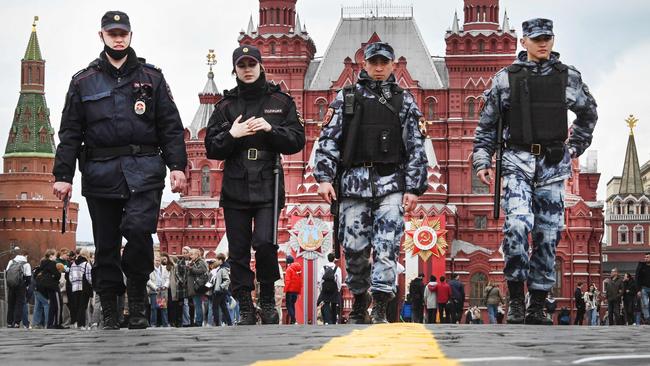
That is the blunt message from Washington to Vladimir Putin this week as the fighting in Ukraine increasingly threatens to spread beyond its borders.
After more than two months of war, the Biden administration this week recast its ambitions for Ukraine well beyond its initial aim of trying from a distance to help Kyiv repel the Russian invaders.
An increasingly confident US is now framing the conflict as a generational battle to weaken Putin’s Russia and stop Moscow from any future military adventurism.
“We want to see Russia weakened to the degree that it can’t do the kinds of things it has done in invading Ukraine,” said the usually cautiously spoken US Defence Secretary Lloyd Austin.
“It has already lost a lot of military capability, and a lot of its troops. And we want to see them not have the capability to very quickly reproduce that capability.”
This was no thought bubble. Austin’s comments were backed by other senior administration figures, including Secretary of State Antony Blinken who, along with Austin, visited Kyiv this week.
“We don’t know how the rest of this war will unfold, but we do know that a sovereign, independent Ukraine will be around for a lot longer than Vladimir Putin is on the scene,” Blinken declared.
This new and more assertive posture by Washington has been strongly backed by other Western allies but it also carries with it a greater risk that the war in Ukraine could eventually spread beyond its borders.
Biden and European leaders have been buoyed by what they see as a sniff of an unlikely victory in the Ukraine conflict, or at least the avoidance of the catastrophic defeat that was once feared.
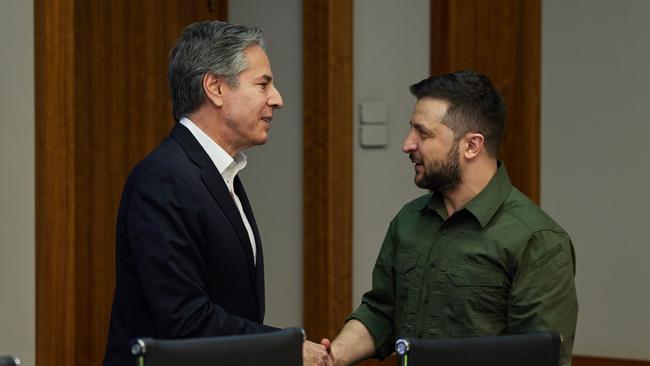
“They have the mindset that they want to win; we have the mindset that we want to help them win, and we are going to do that,” said Austin.
The fierce Ukrainian resistance coupled with the stunning incompetence of the Russian military appears to have persuaded Putin to abandon plans to capture the country and topple the popular regime of Volodymyr Zelensky.
Instead, the war is being transformed into a much more localised battle in the country’s south and in the separatist Donbas region of eastern Ukraine. This partial victory has energised the US and its allies to step up their military assistance to Ukraine in ways that would once have seemed unthinkable, but which also bring with them the danger of creating a broader conflict.
A meeting in Germany this week of more than 40 nations, including Australia, pledged to arm Ukraine “for the long haul”. These promises were once limited to just defensive weapons like antitank weapons but now include offensive weapons such as tanks, howitzers and even parts for fighter jets.
More than $US5 billion in Western arms has now been committed to Ukraine including new American battlefield aerial drones, modern US and Canadian artillery, antitank weapons from Norway and others, armoured vehicles and anti-ship missiles from Britain and Stinger counter-air missiles from the US, Denmark and others.
Austin said he wanted America’s allies to have “a common and transparent understanding of Ukraine’s near-term security requirements because we are going to keep moving heaven and earth so that we can meet them”.
What’s more, both Britain and the US have willingly provoked Moscow by expressing open support for Ukraine using Western-supplied weapons to strike Russian territory. Ukrainian forces are suspected of having caused a series of explosions in southern Russia and a fire at an ammunition depot this week.
Ukrainian presidential adviser Mykhailo Podolyak hinted at Ukrainian involvement when he said: “If a country decides to massively attack another country, massively kill everyone there, massively crush peaceful people with tanks, and use warehouses in your regions to enable the killings, then sooner or later the debts will have to be repaid.”
Britain’s Armed Forces Minister James Heappey said it was “completely legitimate for Ukraine to be targeting Russia’s depth in order to disrupt the logistics that if they weren’t disrupted would directly contribute to death and carnage on Ukrainian soil”.
Blinken also effectively expressed support for such attacks, saying it was up to Ukraine to choose its own tactics. “My own view is that it’s vital that they do whatever is necessary to defend against Russian aggression,” Blinken told a Senate panel.
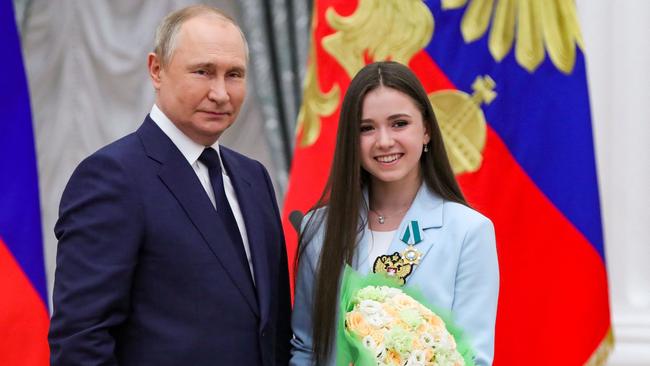
Not surprisingly, Moscow is alarmed by these developments and by the more overt nature of the military support now being offered by the West. In response, it’s now issuing its own threats.
Foreign Minister Sergei Lavrov warned that “NATO is, in essence, going to war with Russia through a proxy” – claiming that they were “pouring oil on the fire” and risking “World War III”.
He said if the US and NATO allies continued to help Ukraine to strike targets in Russia there would be “an immediate proportional response”.
In a sign of the pressure Moscow is now under, Lavrov even suggested that the war could ultimately escalate into a nuclear conflict. “The risks are very significant. I do not want the danger to be artificially inflated (but) it is serious and real. It cannot be underestimated.”
Putin was just as direct, threatening “lightning fast’’ action if Western countries interfere with Russian forces in Ukraine. “If someone intends to interfere in what is going on from the outside they must know that constitutes an unacceptable strategic threat to Russia,” Putin said, without clarifying what would constitute unacceptable interference.
“They must know that our response to counterstrikes will be lightning fast. We have all the weapons we need for this. No one else can brag about these weapons, and we won’t brag about them. But we will use them.”
But as Russian losses mount with limited strategic gains, Putin is now recalibrating his war, withdrawing many of his forces from around Kyiv in the north to focus on the eastern Donbas region.
The fight for the Donbas promises to be a drawn-out slog as the Ukrainian army, bolstered by Western arms, defends against Russian forces which will be easily resupplied given their proximity to the Russian border.
The key question now is how far will Putin go in western and southern Ukraine?
British intelligence estimates of Russian losses in the war so far are sobering and raise questions about whether Putin has the ability to carry out his military aims, even in a more limited form.
British Defence Secretary Ben Wallace this week claimed that 15,000 Russians have been killed, 2000 armoured vehicles destroyed, and 60 helicopters and jet fighters downed in the fighting so far. That casualty toll, if accurate, is more than double what the US lost during 20 years of war in Iraq and Afghanistan combined.
Wallace also said Russia’s massive invasion army of 120 battalions had suffered a staggering 25 per cent loss in combat strength.
Russia is now massing its troops in the east to try to take the remainder of the Donbas region, where pro-Russian separatists have fought the Ukraine government since 2014.
So far, the Russian offensive in the east has been largely limited to artillery fire and has been slower and more methodical than the failed attempt to blitz Kyiv in late February.
“Russian forces have adopted a sounder pattern of operational movement in eastern Ukraine” which is allowing them to “bring more combat power to bear” in their narrower goal of capturing the region, according to an assessment this week by the Washington think tank, the Institute for the Study of War.
Russia is expected to try to merge its forces in the north of the country near Kharkiv with those in the south, potentially trapping Ukrainian forces fighting in Donbas, but it is far from clear that Russia has the capacity to achieve this.
It is also unclear whether Putin would settle for a limited victory in Donbas or whether he would also seek to keep southern port cities like the battered Mariupol to create a direct land corridor to the Crimean peninsula, which Russia annexed illegally in 2014.
A Russian general, Rustam Minnekayev, deputy commander of Russia’s central military district, was quoted as saying the country’s military aim was to secure full control of all of southern Ukraine. If so, this would create not only an eastern land corridor between Crimea and Donbas but potentially a western link to the enclave of Transnistria, a separatist region of Moldova.
A series of explosions this week shook Transnistria, where Russian troops are based, raising speculation Russia might use the violence to justify another route to invade Ukraine.
Regardless of Russia’s ambitions, a ceasefire in this war has never seemed further away. Zelensky is understandably emboldened by the miracle of his own survival and the fact his country has surpassed all expectations to hold off Russia’s war machine. He appears in no mood to agree to Putin’s demands that he recognise the Donbas region as independent and Crimea as a part of Russia.
European and other Western allies have not only remained unified in opposing the Russian invasion but have become more emboldened as time goes on. Speculation that the West’s resolve to oppose Russia would fade with time has so far proved false.
“We want Ukraine to win,” a White House National Security Council spokesman said this week. “We intend to make this invasion a strategic failure for Russia.”
During their visit to Kyiv, Blinken and Austin announced an additional $US713m in financing to pay for weapons for Ukraine and allied countries. In a sign of Biden’s determination on Ukraine, his administration this week unveiled a massive $US33bn request to Congress for a new round of aid - an eye-watering amount that is equivalent to about half the size of Russia’s defence budget.
Meanwhile, economic sanctions imposed on Moscow have only increased and will increasingly take their toll on ordinary Russians as well as on Putin’s army. Russia retaliated by cutting off natural gas supplies to NATO members Poland and Bulgaria. Many of the Western-supplied weapons to Ukraine enter the country from Poland, a country which gets more than 45 per cent of its natural gas from Russia.
Many more weapons are expected to transit through Poland to Ukraine in the weeks ahead as the West tries desperately to deliver fresh supplies to Ukrainian forces in the east before the expected Russian onslaught there.
As Austin put it, allies need to “move at the speed of war” to get heavier weapons into the hands of Ukrainian troops in Donbas and in the south before it is too late.
There’s no guarantee Ukraine will remain fully intact when this is over. It is difficult to imagine Putin withdrawing from the limited territory he has so far gained. But his decision to invade is looking more foolhardy by the day, and a new cold war with the US is a legacy that will haunt Putin long after the guns in Ukraine have fallen silent.



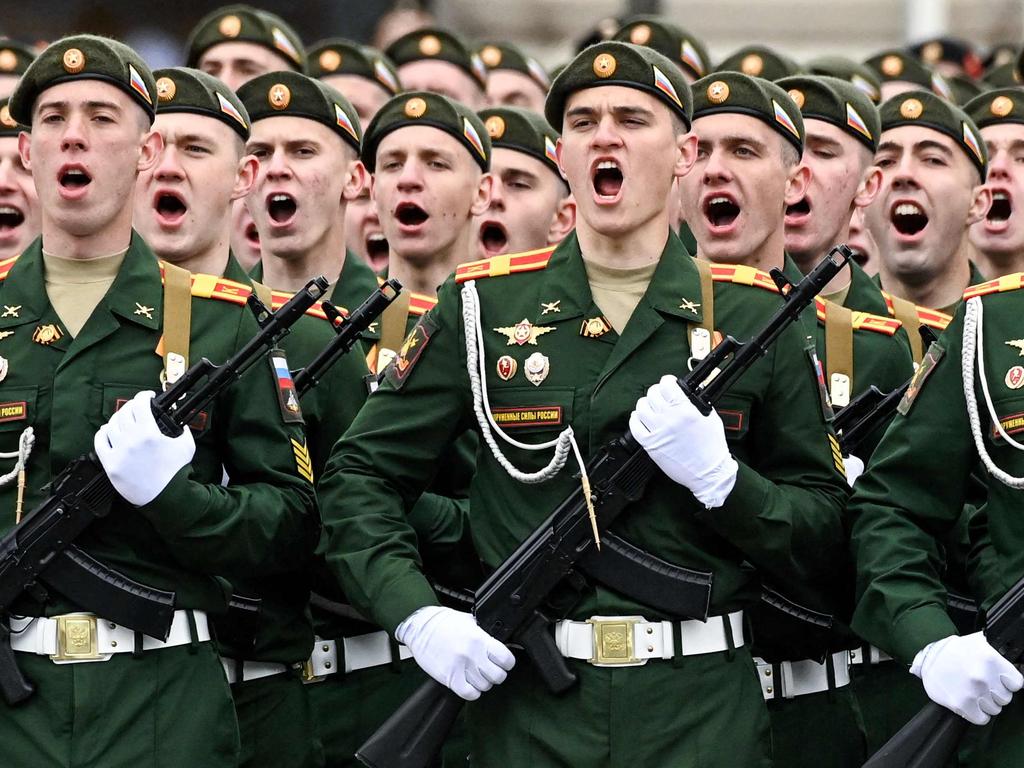
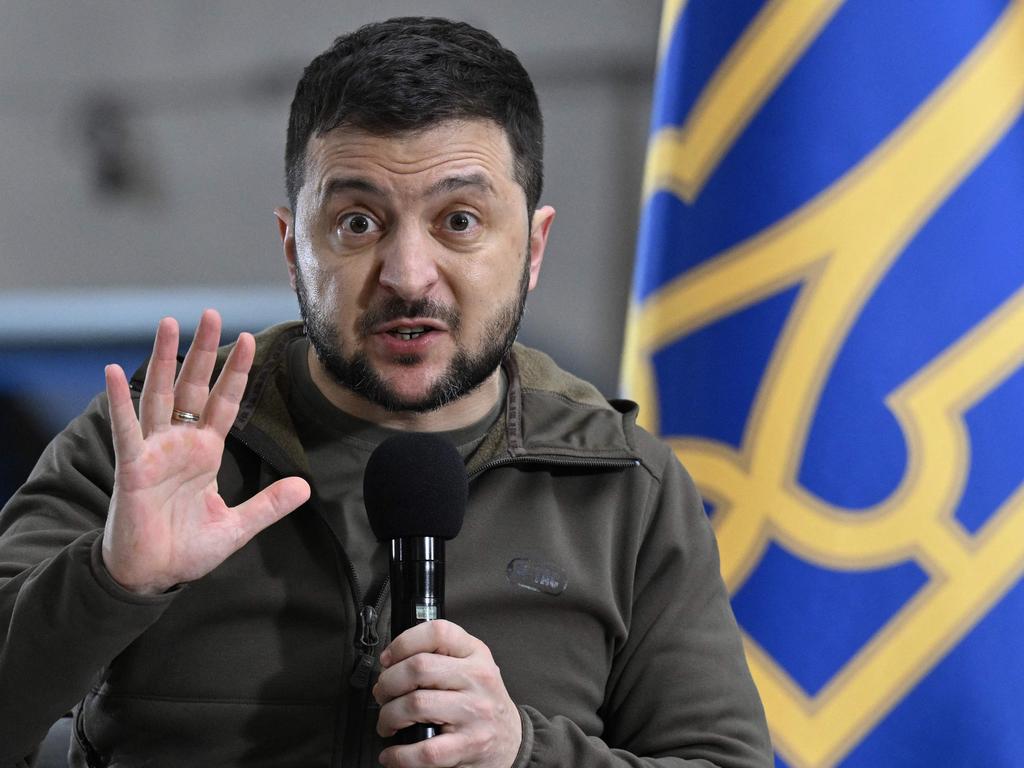

Welcome to the new cold war.